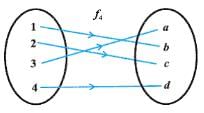Test: Introduction To Functions - JEE MCQ
Test Description
15 Questions MCQ Test - Test: Introduction To Functions
Test: Introduction To Functions for JEE 2025 is part of JEE preparation. The Test: Introduction To Functions questions and answers have been prepared
according to the JEE exam syllabus.The Test: Introduction To Functions MCQs are made for JEE 2025 Exam.
Find important definitions, questions, notes, meanings, examples, exercises, MCQs and online tests for Test: Introduction To Functions below.
Solutions of Test: Introduction To Functions questions in English are available as part of our course for JEE & Test: Introduction To Functions solutions in
Hindi for JEE course.
Download more important topics, notes, lectures and mock test series for JEE Exam by signing up for free. Attempt Test: Introduction To Functions | 15 questions in 15 minutes | Mock test for JEE preparation | Free important questions MCQ to study for JEE Exam | Download free PDF with solutions
Test: Introduction To Functions - Question 1
Let A = {1, 2, 3} and B = {5, 6, 7, 8, 9} and let f(x) = {(1, 8), (2, 7), (3, 6)} then f is
Detailed Solution for Test: Introduction To Functions - Question 1
Detailed Solution for Test: Introduction To Functions - Question 2
Test: Introduction To Functions - Question 3
Let f : N →N be defined by  for all n ∈ N.
for all n ∈ N.
Then, the function f is
 for all n ∈ N.
for all n ∈ N.Then, the function f is
Detailed Solution for Test: Introduction To Functions - Question 3
Detailed Solution for Test: Introduction To Functions - Question 4
Detailed Solution for Test: Introduction To Functions - Question 5
Test: Introduction To Functions - Question 6
Let A = R − {3}, B = R − {1}, and let f : A → B be defined by f(x) =  f is
f is
Detailed Solution for Test: Introduction To Functions - Question 6
Test: Introduction To Functions - Question 7
The image of the interval [1, 3] under the mapping f : R → R, given by f(x) = 2x3 − 24x + 107 is
Detailed Solution for Test: Introduction To Functions - Question 7
Test: Introduction To Functions - Question 8
If f : R → R is given by f(x) =  then the function f is
then the function f is
Detailed Solution for Test: Introduction To Functions - Question 8
Test: Introduction To Functions - Question 9
Which of the following functions is (are) injective map(s)?
Detailed Solution for Test: Introduction To Functions - Question 9
Detailed Solution for Test: Introduction To Functions - Question 10
Test: Introduction To Functions - Question 11
f : R → defined by f(x) = (x − 1)(x − 2)(x − 3) is
Detailed Solution for Test: Introduction To Functions - Question 11
Test: Introduction To Functions - Question 12
Let f: {1, 2, 3} → {1, 2, 3} be an onto function. Then, f is
Detailed Solution for Test: Introduction To Functions - Question 12
Test: Introduction To Functions - Question 13
The number of bijective functions from a set A to itself when A contains 106 elements, is
Detailed Solution for Test: Introduction To Functions - Question 13
Detailed Solution for Test: Introduction To Functions - Question 14
Test: Introduction To Functions - Question 15
 where [.] denotes the greatest integer function, then
where [.] denotes the greatest integer function, then
Detailed Solution for Test: Introduction To Functions - Question 15
Information about Test: Introduction To Functions Page
In this test you can find the Exam questions for Test: Introduction To Functions solved & explained in the simplest way possible.
Besides giving Questions and answers for Test: Introduction To Functions, EduRev gives you an ample number of Online tests for practice
Download as PDF




 x in R such that f(x) = y.)
x in R such that f(x) = y.)

 then 3y − 3 = 3y − 2 or −3 = −2
then 3y − 3 = 3y − 2 or −3 = −2



















